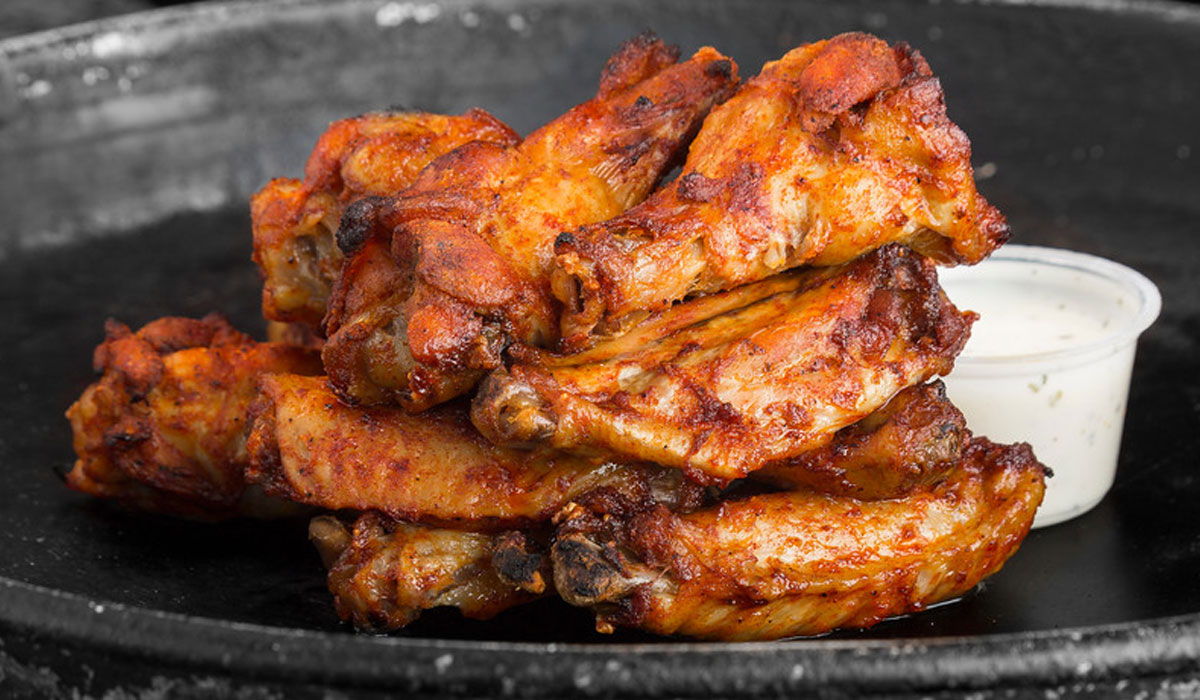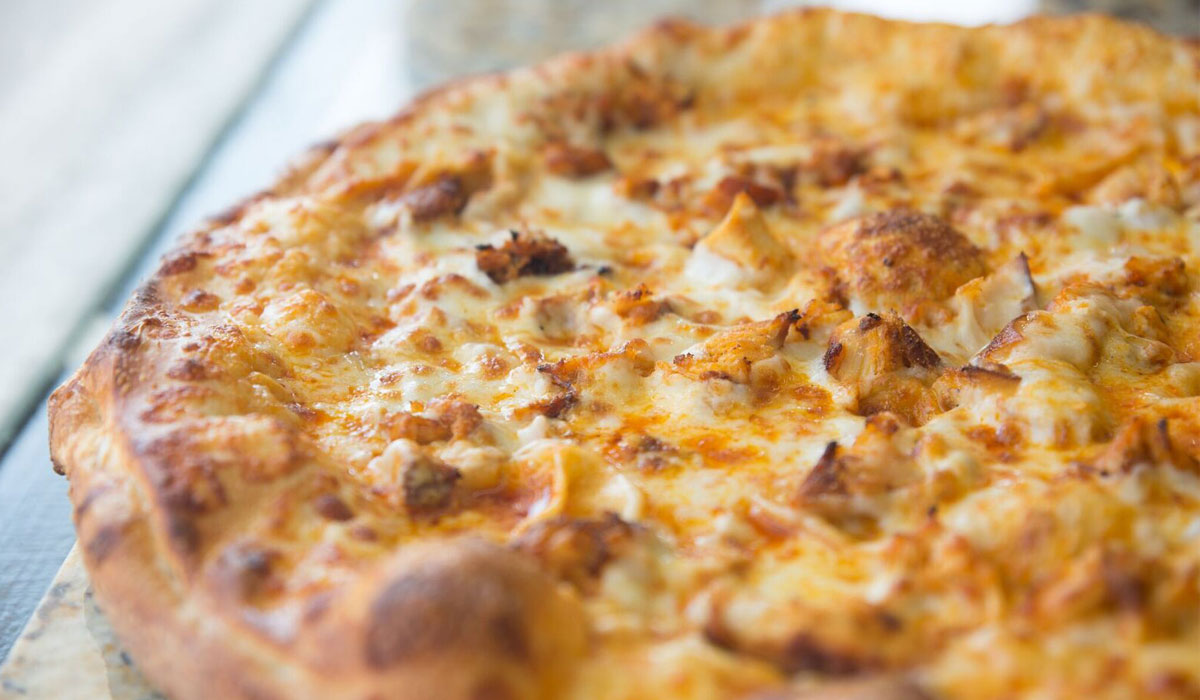Earlier this year, Stoner’s Pizza Joint, a small chain of mom-and-pop-type restaurants, was bought by HHI Hospitality. The group saw potential in this tiny pizza chain spread across Georgia and South Carolina. Intending to take Stoner’s Pizza Joint nationwide, the new owners have spent the past few months integrating fresh technology into existing and new locations while forming a growth strategy that could scale both franchise and corporate reach across the U.S., and possibly into international markets.
Stoner’s chief concept officer, Nick Bergelt, has big plans for the company. The fast-casual pizza industry is rife with competitors and he believes the innovation and technology Stoner’s is adding will put it in the same league as much larger players.
“We came across this chain and at the time that we bought it, it was heavily concentrated in Georgia and South Carolina, and so it was more of just a small mom-and-pop Southeast footprint,” Bergelt says. “It was an antiquated business at the time. It was running off of a mom-and-pop model no real technology, no real processing system to help it scale and move forward. So inherently by virtue of just some of the business fundamentals not being where they should have been, we thought it was a great opportunity to kind of rebirth the brand and insulate it with everything it would need to be very dominant in this space moving forward.”
He adds, “We had a blank canvas to literally recreate a pizza brand that’s aligned for really putting ourselves in a position to be the future of pizza. So all of those inefficiencies that existed allowed us to come and solve them with technologies that haven’t existed in the past.”
Based in the Southeast, the brand is focused on growing concentrically from existing corporate locations. Currently there are 11 company-run stores and, by the end of Q1 of 2019, there will be nine franchise commitments in development. The first phase of franchise development outside of the Southeast will take place in Texas where Stoner’s partnered with a multi-unit operator who plans to open six units.

If a franchisee can support a multi-unit deal, Stoner’s is willing to do larger sales, Bergelt says. The brand is also open to single-unit expansion.
Bergelt says opening a Stoner’s franchise is more affordable compared to other pizza brands. The cost for a franchisee to open a Stoner’s location is about $150,000. Those franchisees will often see a return in their investment within about two years, Bergelt says.
“From a traction standpoint and why [Stoner’s] stood out from other pizza places is the unit-level economics,” he says. “Comparatively to the other major chains out there that are upward of $500,000, $600,000, $700,000 all the way up to a million bucks to put together a restaurant, Stoner’s falls into kind of an affordable range. It opens us up to a broader franchisee market because capital requirements aren’t what they are for other major restaurants brands.”
“We’re trying to really look at each opportunity individually,” Bergelt adds. “We’ve got some very, very large folks that have hundreds of restaurants in their portfolio and they view this as an exciting kind of ground level, green space brand that they can grow with us. So with those kind of folks we’re willing to look at Western markets.”
It’s more than just a name
As social norms continue to change positively for the marijuana culture, Stoner’s is planning on capitalizing on markets and products where it is legalized. Expansion will continue in other areas, but the company has the potential to stamp its brand into markets at the beginning of the marijuana movement. “We understand there’s going to be a material implication for consumers and their interests and we know we’re just at the inception of what that means and we’re ready to position the brand to take advantage of its own growth along those lines,” Bergelt says.
Stoner’s has seen an uptick regarding inbound organic interest from franchisees in legalized states and even international interest from Canada, where marijuana is now legal.
“Obviously, we’re getting a lot of organic interest just from legalized states and things of that nature because it’s on trend,” Bergelt says. “We are getting a lot of natural inbound organic interest from those [legalized] states because I believe the brand resonates a little bit more now that it’s a little bit more socially acceptable for marijuana culture. So from a franchise perspective we’re looking at everything.”
Stoner’s wants to be a leader in the growing segment. Introducing CBD and hemp into an extended product line are in the works, the chain said. A private label of CBD-infused beverages and sodas are in development as well, and other products like sauces and chili oils could follow soon as retail line extensions.
“The convergence of where CBD and hemp are going to play a role in the food space—not necessarily THC derivatives or components—but we’re a big believer in what CBD can do, the health implications,” Bergelt says. “We are also moving into a space where we will be segment leaders.”
The delivery equation
The company is heavily focused on delivery, with 51 percent of revenue coming from off-premises sales. That model paired with the overall growing need of convenience sets Stoner’s up in a place that is attractive to customers and lucrative for the brand and franchisees. Bergelt says, “From a pizza perspective convenience reigns king. It’s kind of the predominant niche when someone’s thinking of the most convenient option—pizza rings true.”
“We are very heavy delivery focused and that was another tenet of what attracted us to the brand,” he adds. “Knowing that delivery is going to be paramount, having a product that can translate to that changing demographic and maintain product integrity for the customer—that’s important as well for us.”
In order to become a competitor in the delivery segment, the company needed a complete overhaul of technology at the stores. From point-of-sale systems to automation in the kitchen, each location was completely updated. Stoner’s is launching an app by the end of 2018 that will help improve both the in-store and delivery customer experience.
“We will never replace that human element because we view that as a differentiating factor among a sea of competitors in the pizza space. We want to be more than just a pizza parlor, but a 360-degree experience where everything you see in the store you touch, you hear, you smell has all been curated into an experience to make you ultimately feel better than when you walked in.” — Nick Bergelt, Stoner’s chief concept officer
“The systems that we walked in to were, candidly, the most antiquated systems that we’ve ever seen, but inherently therein lies the opportunity,” Bergelt says. “We view this as a technology business that happens to pump out a pizza and delivers hospitality to folks.”
From the time the pizza enters the oven to when it’s delivered to a customer’s door, Stoner’s is using technology and artificial intelligence to create a seamless operation. He says, “We brought in delivery and logistics software that leverages artificial intelligence and just delivers a whole different level of efficiencies for us to really truly be a delivery-first concept and being able to execute on that.”
Customers can also interact with drivers in real time through texting and see where the driver is at just as if they had ordered an Uber.
Bergelt describes third-party delivery services, like UberEats and Postmates, as friendly competition. While the company hopes to have a full in-house delivery fleet, there is some interaction with the other delivery services. He says that customers who order through those services usually turn to the in-house delivery platform after an order or two.
“Whereas a lot of folks are looking for alternatives to internal fleet management whether that’s the UberEats of the world, Postmates and things of that nature, we knew from a margin perspective that wasn’t space we wanted to give up,” he says. “We still play friendly with those services, but we truly view that as a marketing awareness spend and then look to bring those customers after one experience with them via calls to action and bring them into our world, into our fleet, and then we kind of take it from there. We knew that in order to be able to execute on our plans we needed to do that.”
Customer service is still king
Allowing other delivery services to deliver its food offered customers less time and interaction with the brand. Hospitality plays a big role in Stoner’s culture and giving another platform the opportunity to represent them didn’t sit well with Bergelt.
“The challenge is also that 50 percent of our customers, we only really got to see for 3–5 minutes on delivery, so figuring out a way a process and still drive hospitality and still drive a brand experience—that was also one of the critical factors that we didn’t want to give to someone else,” Bergelt says. “We didn’t want someone else to be representative of who we are so that was also a part of the decision making.”
In-store technology is just as important as the technology the company is using for delivery. The customer service representative in the stores helps further the brand’s culture and hospitality. Stoner’s uses customer data to help create a customized experience that will in theory increase traffic and return visits.
“We’re using certain in-store technologies to be able to identify before you say a thing who you are, what your last order was using beacons and things of that nature with our digital app,” he says. “It helps us deliver an unprecedented level of customer knowledge that helps us build better relationships.”
This data also allows Stoner’s to study the ordering habits of customers. From the data, the company can learn that when a customer buys a pepperoni pizza they are more likely to return to the restaurant within 72 hours versus if a customer orders a pineapple and ham pizza it might be 7–10 days before the customer returns.
Other in-store technologies, like self-service kiosks, are under development and will be tested in units in the coming year.
A drive-thru model is also being worked on to further extend convenience to customers. Bergelt also thinks this model will help in the future when we’re in a world where “we may start being in a place and time where were sitting in the back and we’re telling our cars where to go.”
Even though the company is so heavily focused on delivery and will continue expanding that part of the brand, Bergelt says the in-store experience will always play a key role. Human interaction is an essential part of the brand’s culture.
“We’ll never get rid of our customer service reps,” he says. “We are a hospitality driven culture. We firmly believe that 49 percent of the reason that we have brand loyalty or frequency with guests is because of the food and quality of what we’re pumping out. Fifty-one percent is the brand experience and how we’re making people feel.”
“We will never replace that human element because we view that as a differentiating factor among a sea of competitors in the pizza space. We want to be more than just a pizza parlor, but a 360-degree experience where everything you see in the store you touch, you hear, you smell has all been curated into an experience to make you ultimately feel better than when you walked in.”





